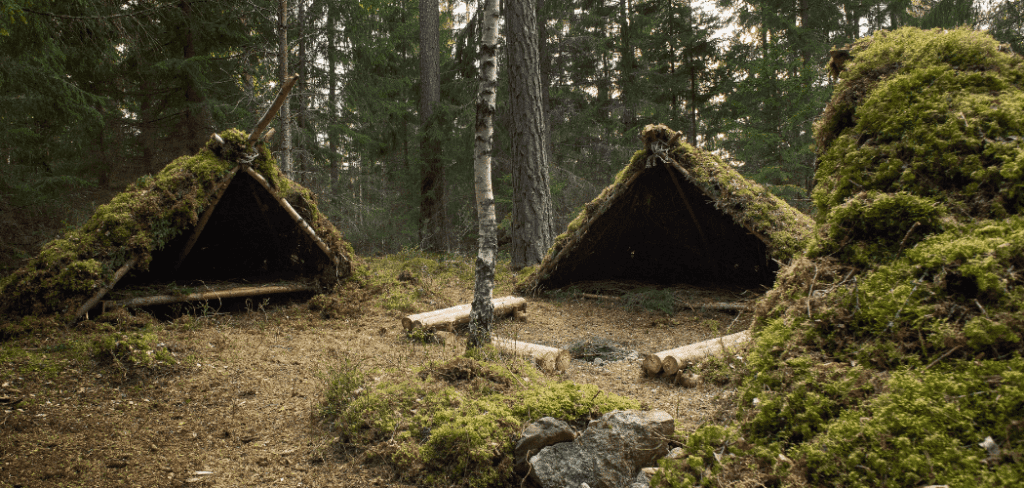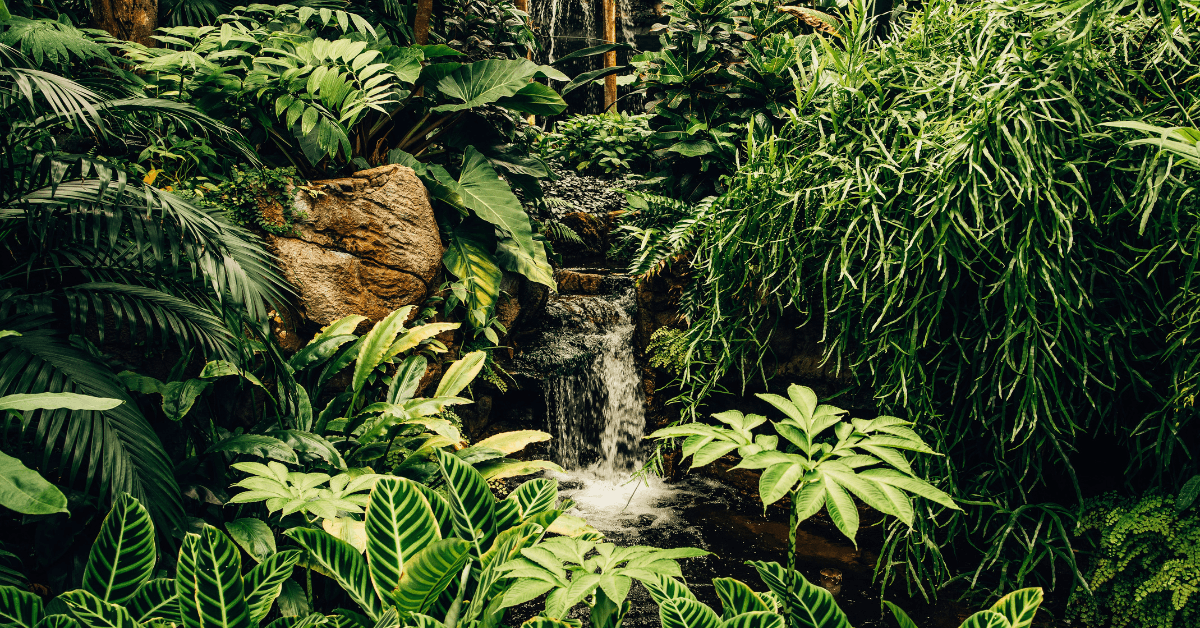Whether you’re an experienced outdoor enthusiast or a novice adventurer, survival skills are essential when you find yourself in the jungle with nothing. The jungle is a complex and often treacherous environment, filled with potential dangers and unexpected challenges.
Despite these challenges, however, mastering survival skills can help you overcome any obstacles you may encounter and allow you to emerge from the jungle stronger and wiser. And survival skills are not just about staying alive; they also help build resilience, self-confidence, and problem-solving abilities.
So, before you set off into the jungle, it’s important to prepare yourself mentally and physically for the challenges ahead. With the right mindset and a set of essential survival skills, you can increase your chances of survival and emerge from the jungle with a newfound sense of strength and accomplishment.
In the next sections, we’ll delve into the essential survival skills you need to know to survive in the jungle with nothing. From building a shelter to finding food and water, we’ll explore everything you need to know to stay alive and thrive in this challenging environment. So, let’s get started!
1. Assessing Your Situation
Before you can begin to survive in the jungle with nothing, it’s essential to assess your situation. Understanding your immediate environment, identifying potential dangers and threats, and assessing your physical and mental condition can help you make better decisions and increase your chances of survival.
A. Understanding Your Immediate Environment
The jungle is a complex and diverse environment, and understanding your immediate surroundings is crucial. Take some time to observe your environment, paying attention to the types of plants and animals present, the terrain, and the weather conditions. This will help you identify potential resources and threats and develop a plan of action.
B. Identifying Potential Dangers and Threats
The jungle is home to many potential dangers, from venomous snakes and spiders to large predators like jaguars and crocodiles. Identify potential threats in your immediate surroundings and take steps to avoid or protect yourself from them. For example, if you come across a venomous snake, keep your distance and avoid disturbing it.
C. Assessing Your Physical and Mental Condition
Surviving in the jungle with nothing requires physical and mental toughness. Assess your physical and mental condition and take steps to maintain your health and well-being. Stay hydrated, well-fed, and rested, and be aware of the signs of dehydration, heat exhaustion, and other common ailments.
2. First Aid and Medical Care
In the jungle, injuries and illnesses can happen at any time. Without proper medical care, even minor injuries can become life-threatening. Here are some tips on how to provide first aid and medical care in a survival situation:
A. Carry a First Aid Kit
Carry a well-stocked first aid kit with you at all times. It should include items such as bandages, antiseptics, pain relievers, tweezers, and scissors. Learn how to use each item in the kit and keep it organized so that you can access what you need quickly.
B. Treat Wounds
Wounds can easily become infected in the jungle, which can lead to serious health problems. Clean the wound with clean water and soap, and cover it with a bandage or dressing. Change the dressing regularly and monitor the wound for signs of infection.
C. Treat Infections and Illnesses
Infections and illnesses can quickly become serious without proper medical care. Know how to identify the signs and symptoms of common illnesses and infections such as malaria, dengue fever, and diarrhea. Consider carrying antibiotics and other medications in your first aid kit.
D. Treat Dehydration
Dehydration is a common problem in the jungle, and it can quickly become life-threatening. If you or someone in your group is dehydrated, stop and rest in a shaded area, and drink plenty of water. If the dehydration is severe, consider using an oral rehydration solution.
E. Know When to Seek Medical Help
In some cases, you may need to seek medical help from a professional. If someone is seriously injured or ill, or if you’re unsure how to treat a particular condition, it’s best to seek medical help as soon as possible. Carry a means of communication, such as a satellite phone or emergency beacon, to call for help if needed.
3. Navigating Your Environment

When you’re lost in the jungle, navigating your environment is essential to finding your way back to civilization. The dense foliage and lack of landmarks can make it difficult to determine your location and direction. However, with some basic navigational skills and tools, you can increase your chances of survival and rescue.
A. Using the Sun and Stars
The sun and stars can be valuable tools for determining your direction of travel. During the day, use the position of the sun to determine east and west. Hold a stick upright and mark the tip of the shadow. Wait 15 minutes and mark the tip of the shadow again.
Draw a line between the two marks, and it will point east-west. At night, use the North Star (Polaris) to determine north. Find Polaris by locating the Big Dipper and following the two outer stars of the “bowl” to find Polaris.
B. Using Natural Markers
Pay attention to natural markers such as mountains, rivers, and the position of the sun or stars to determine your location and direction. These can help you create a mental map of your surroundings and track your progress.
C. Using a Compass
A compass is a valuable tool for navigating in the jungle. It allows you to determine the four cardinal directions (north, south, east, and west) and follow a specific bearing. Place the compass on a flat surface, and turn it until the needle points to north. Turn your body until you are facing north, and then use the compass to determine your desired direction of travel.
D. Using GPS or a Map
If you have a GPS device or map, use it to determine your location and navigate your way back to civilization. However, keep in mind that these tools can malfunction or run out of battery, so it’s important to have backup navigational skills.
4. Making Fire
Fire is one of the most essential resources for survival in the jungle. It provides warmth, light, a means of cooking food, and can even be used for signaling for help. Without matches or a lighter, starting a fire can seem like an impossible task. However, with the right knowledge and skills, it’s possible to start a fire using nothing but natural resources.
Step 1: Gathering Materials
Before attempting to start a fire, gather materials that will help you build it. Look for dry leaves, twigs, and small branches that will easily catch fire. Collect larger logs to use as fuel once the fire is going.
Step 2: Building a Fire Pit
Building a fire pit is essential to keep the fire contained and prevent it from spreading. Choose an area away from trees and other vegetation, and clear the ground of any debris. Create a circle of rocks or dig a shallow pit to build the fire in.
Step 3: Creating a Fire Starter
There are many ways to create a fire starter using natural resources. A simple method is to use a bow drill, which involves using a bow to rotate a spindle against a flat board. This creates friction, which produces heat and ignites a small bundle of dry leaves or twigs.
Another method is to use a fire plow, which involves rubbing a wooden stick against a flat board to create a spark.
Step 4: Starting the Fire
Once you have your fire starter, place it in the fire pit on top of a small bundle of dry leaves or twigs. Use the bow drill or fire plow to ignite the starter, and slowly add more twigs and branches until the fire grows. Once the fire is going, add larger logs to keep it burning.
5. Building a Shelter

In the jungle, shelter is critical for protecting yourself from the elements, staying dry, and avoiding exposure. With nothing but the natural resources around you, building a shelter can seem like a daunting task, but with a little bit of knowledge and some elbow grease, it can be done.
A. Choose Your Location
When choosing a location for your shelter, consider the terrain, nearby water sources, and potential hazards. Look for a spot that’s dry, well-drained, and protected from strong winds. Avoid areas near stagnant water sources, which can attract mosquitoes and other insects.
B. Build Your Shelter
There are many ways to build a shelter in the jungle, depending on the materials available and your skill level. A simple shelter can be made by leaning branches against a tree trunk and covering them with leaves, vines, or other foliage. Alternatively, you can construct a more elaborate shelter using bamboo, logs, and other natural materials.
C. Consider Your Fire Needs
In the jungle, having a fire can provide warmth, light, and a way to cook food. When building your shelter, consider your fire needs and choose a location that’s safe for building and maintaining a fire. Be sure to gather dry wood and kindling and keep your fire contained to avoid accidental fires.
D. Make Your Shelter Comfortable
Finally, make your shelter as comfortable as possible. Add a layer of leaves or grass to the ground to provide insulation and padding, and consider building a raised platform to keep yourself off the ground. You can also add natural decorations such as flowers or plants to make your shelter feel more like home.
6. Coping with the Elements
When you’re out in the jungle with nothing, coping with the elements becomes a top priority. The harsh weather conditions and extreme temperatures can be life-threatening if you’re not properly prepared. Here are some tips on how to cope with the elements:
A. Staying Hydrated
Dehydration can quickly become a serious issue in the jungle. It’s important to drink plenty of water and other fluids to stay hydrated. If you’re unable to find a source of clean water, consider using a water filter or boiling water to make it safe to drink. You can also collect dew or rainwater using a container or cloth.
B. Protecting Yourself from the Sun
The sun’s intense rays can cause sunburn, heat exhaustion, and dehydration. Protect yourself from the sun by wearing loose, lightweight clothing that covers your skin, a wide-brimmed hat, and sunglasses. Use sunscreen with at least SPF 30, and apply it regularly throughout the day.
C. Keeping Warm
Temperatures can drop significantly at night in the jungle, and it’s important to stay warm to avoid hypothermia. Build a fire, create a shelter that traps your body heat, and use layers of clothing and blankets to stay warm.
D. Coping with Rain and Humidity
Rain and humidity are common in the jungle, and they can make it difficult to stay dry and comfortable. Build a waterproof shelter using natural materials or a tarp, and avoid staying in wet clothing for too long. If you’re prone to chafing, use a lubricant such as petroleum jelly to reduce friction.
E. Avoiding Insect Bites
Insects such as mosquitoes, ticks, and ants are prevalent in the jungle and can carry diseases. Protect yourself by wearing long-sleeved shirts and pants, using insect repellent, and sleeping under a mosquito net.
7. Finding Food and Water

In the jungle, finding food and water is essential for survival. With nothing but the natural resources around you, it can be a challenging task, but with the right knowledge and skills, it’s possible.
A. Finding Water
Water is essential for survival, and in the jungle, it can be found in many forms. Look for sources of freshwater such as streams, rivers, and natural springs. Rainwater can also be collected by using large leaves or creating a makeshift catchment system using a tarp or other waterproof material.
If you’re unsure if water is safe to drink, be sure to purify it before consumption by boiling or using a water filtration system.
B. Finding Food
Finding food in the jungle can be challenging, but there are many sources of edible plants, insects, and animals. Look for fruit trees such as bananas, coconuts, and papayas, and wild berries and nuts. Edible insects such as ants, termites, and grasshoppers can also provide a good source of protein.
Be cautious when hunting for animals and make sure you have the necessary tools and skills to do so safely and humanely.
C. Avoiding Poisonous Plants and Animals
In the jungle, there are many poisonous plants and animals that can be harmful or even deadly if ingested or encountered. Take the time to learn about the types of plants and animals in your environment and which ones to avoid.
Be cautious when trying new foods and be sure to properly identify them before consuming.
Related: Why Is The Desert So Dangerous?
8. Maintaining Mental and Emotional Health
Surviving in the jungle with nothing is not just physically challenging but can also take a toll on your mental and emotional health. Here are some tips to help you maintain your mental and emotional health during a jungle survival situation:
A. Stay Positive
One of the most important things you can do is to stay positive. Focus on the things that you’re grateful for, and keep a positive outlook on the situation. It’s essential to keep your spirits up in order to stay motivated and focused.
B. Stay Active
Staying active can help you stay mentally and emotionally healthy. Exercise can help to relieve stress, boost your mood, and improve your overall well-being. Take regular breaks to stretch, walk, or do some yoga.
C. Connect with Others
Connecting with others is essential for maintaining your mental and emotional health. If you’re stranded with others, try to work together and support each other. If you’re alone, try to connect with other people through a means of communication such as a radio or satellite phone.
D. Focus on Basic Needs
Focusing on your basic needs such as shelter, food, and water can help you maintain a sense of control and stability. When you have a sense of control, it can help reduce stress and anxiety.
E. Find Joy in Small Things
Finally, finding joy in small things can help you stay positive and maintain your mental and emotional health. Take time to appreciate the beauty of nature, listen to the sounds of the jungle, or take time to read a book or journal.
So there you have it, our detailed guide on how to survive in the jungle with nothing.
As you’ve seen, surviving in the jungle with nothing is a challenging task, but it’s not impossible. To increase your chances of survival, you need to assess your situation, build a shelter, find food and water, make fire, navigate your environment, take care of your physical and mental health, and stay determined.
Finally, never give up hope. Stay positive, stay focused, and stay determined. With the right mindset and the right skills, you can overcome even the toughest challenges and emerge victorious.
